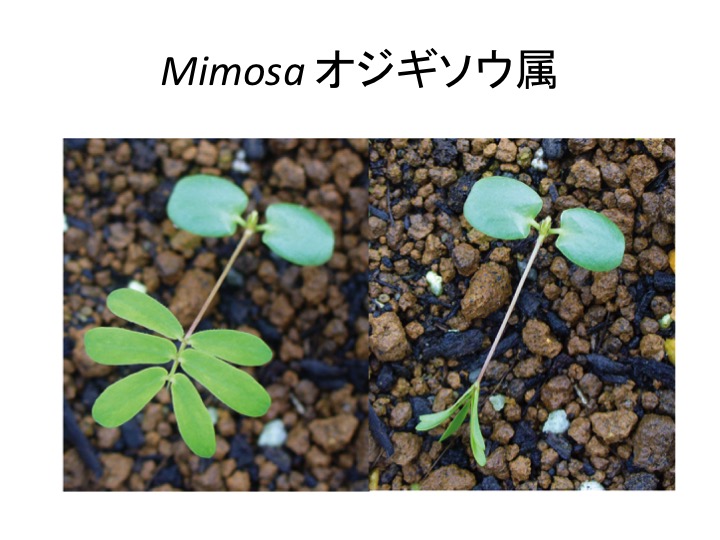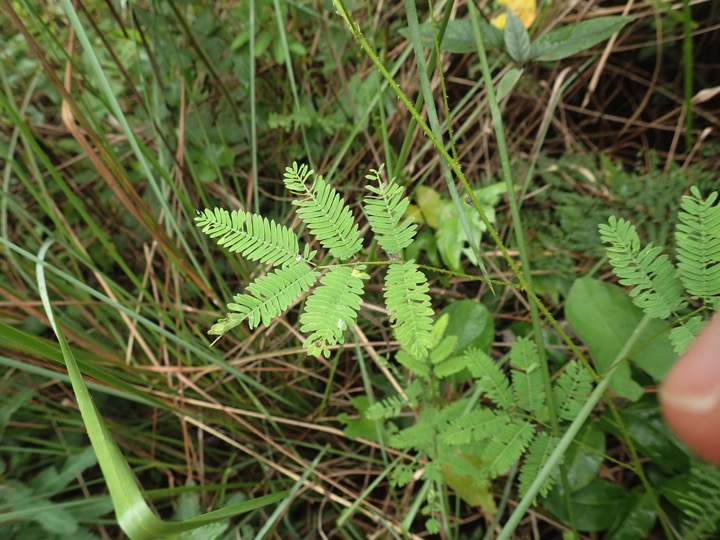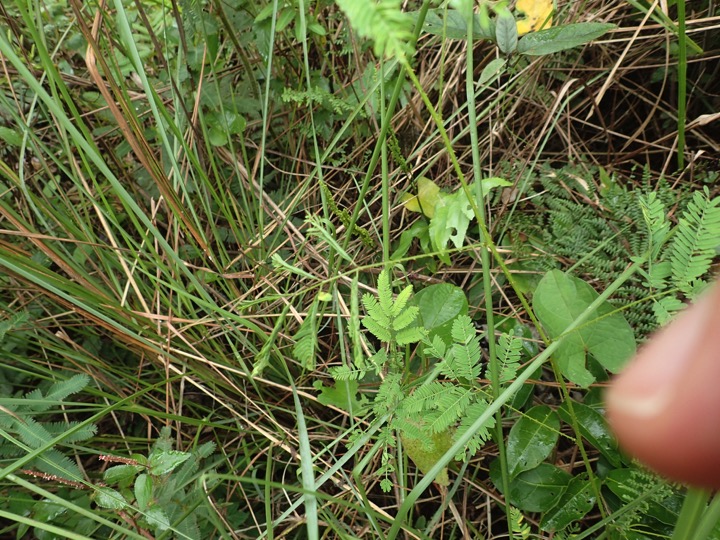オジギソウの葉は機械刺激、温度刺激、化学刺激、あるいは他の刺激によって、1秒以内に動く。この動きはお辞儀運動と呼ばれている。お辞儀運動はオジギソウ属で8回独立に進化した(Simon et al. 2011)。ただ、これら以外の種もオジギソウほど速くないが運動をするものがある(Simon et al. 2011)。お辞儀運動は以下の適応的意義があると考えられている。(1)捕食昆虫を驚かせたり振り落としたりする (Pickard 1973)、(2)食べごたえの少ない葉だと思わせる(Braam 2004)、(3)視界から消える(Eisner 1981)、(4)棘を表出する(Eisner 1981)。オジギソウと同じ属だが動かない種を隣あわせて植えると、動かない種の方がたくさん害虫に食べられてしまったという観察もある(Pickard 1973)。葉が回復するまでの時間は光合成に有効な光量が少ないほど速い(Jansen et al. 2011)。葉が閉じることは防御であるとすると、エネルギーに余裕のあるときは葉の閉じている時間を長くして防御に多くの投資をするが、エネルギーの少ないときは防御への投資を少なくしていると解釈されている(Jansen et al. 2011)。どんな分子機構でこのような仕組みを作っているのだろうか。
Leaves of Mimosa pudica move within a second by mechanistic, thermal, chemical, or other stimuli, which is called as seismonastic movement. Seismonasty evolved at least eight times in Mimosa (Simon et al. 2011). The sensitivity varies between species and multiple Mimosa species move more slowly in some extent (Simon et al. 2011). Seismonasty is proposed to be adaptive as defense strategy: (1) startling or throwing predator insects (Pickard 1973), (2) showing as less voluminous meals (Braam 2004), (3) disappearing from the view (Eisner 1981), and (4) pronounced increase in thorn exposure (Eisner 1981). When M. pudica and non-motile Mimosa species are planted side by side, the latter suffered more severely than the former did (Pickard 1973). Time to reopen leaves decreased in proportion to the decrease of photosynthetically active radiation (Jensen et al. 2011). This is interpreted that M. pudica accepts greater risk when energetically stressed as animals do (Jensen et al. 2011). How is such system operated at the molecular level?
Braam, J. (2005). In touch: plant responses to mechanical stimuli. New Phytol. 165, 373-389.
Eisner, T. (1981). Leaf folding in a sensitive plant: A defensive thorn-exposure mechanism? Proc. Natl. Acad. Sci. USA 78, 402-404.
Jensen, E.L., Dill, L.M., and Cahill, J.F., Jr. (2011). Applying behavioral-ecological theory to plant defense: light-dependent movement in Mimosa pudica suggests a trade-off between predation risk and energetic reward. Am Nat 177, 377-381.
Pickard, B.G. 1973. Action potentials in higher plants. Bot. Rev. 39: 172-201.
Simon, M.F., Grether, R., de Queiroz, L.P., Sarkinen, T.E., Dutra, V.F., and Hughes, C.E. (2011). The evolutionary history of Mimosa (Leguminosae): toward a phylogeny of the sensitive plants. Am. J. Bot. 98, 1201-1221.
When the leaf is touched,
視界から消える。
The leaf disappeared from the view.



